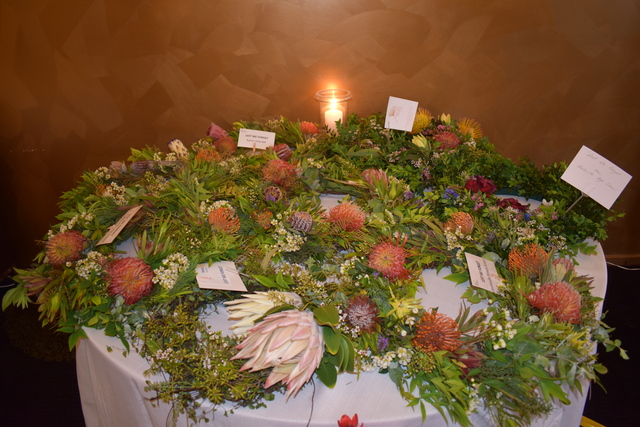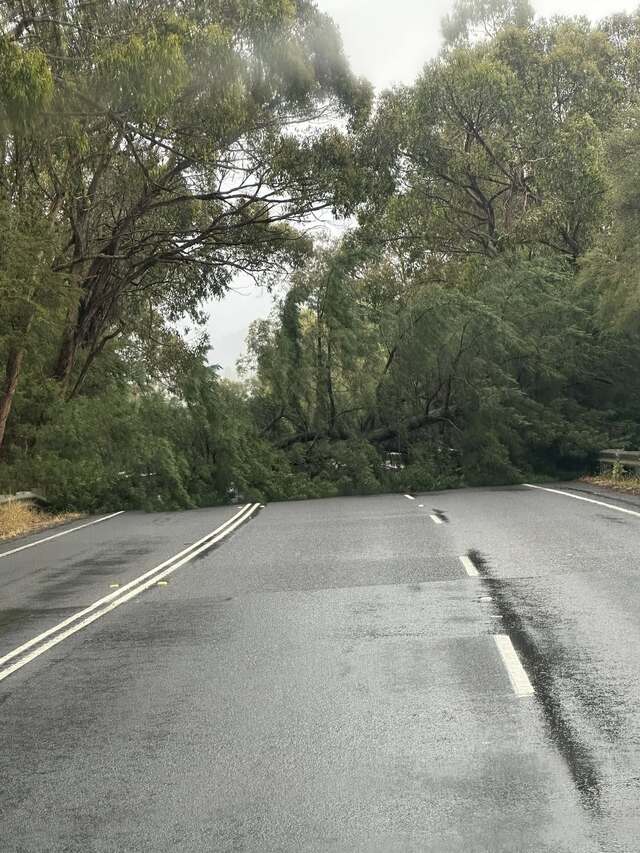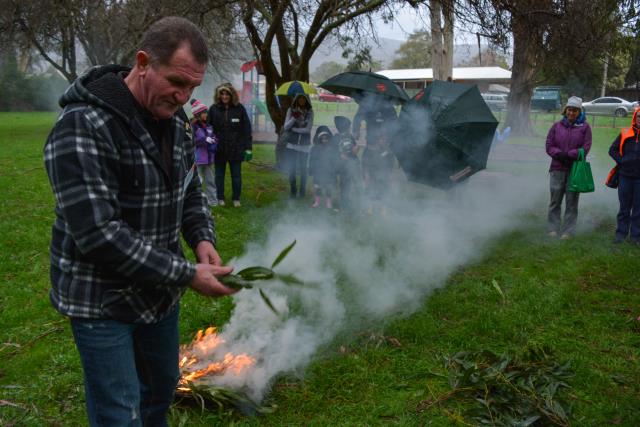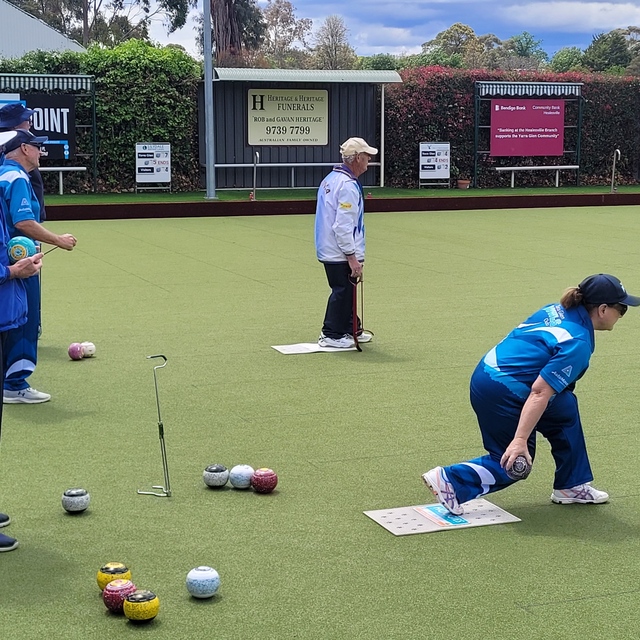At 11am on 11 November, veterans, service members and people from the Healesville community gathered to honour those who have served in conflict.
Sheltering from the rain inside the Healesville RSL, attendees reflected on the sacrifice of those who have fought in world wars and other conflicts.
Healesville RSL president Colette Shaw led the service and said it is an important day of reflection and remembrance.
“The first World War was in its time the most destructive conflict yet ever experienced by humanity, when it began in August 1914, few imagined the course that it would take or foresaw its terrible toll,” she said.
“From a population of just under five million, more than 400,000 Australians enlisted in the Australian Imperial Forces (the AIF) and more than 330,000 served overseas… more than 60,000 Australians lost their lives, a devastating toll for a small country, yet there were relatively few.
“Around the world, some 10 million military personnel died in what was then called the Great War, families and communities everywhere were affected by the enormous loss and when an armistice ended the fighting on the 11th of November 1918, celebrations in the victorious nations were tempered by grief and sorrow.”
Wreaths were laid at the front of the room by or on behalf of the Healesville RSL, Casey MP Aaron Violi, Eildon MP Cindy McLeish, Yarra Ranges Council, Healesville Rotary Club, Healesville High School, Healesville Primary School and St Brigid’s Primary School.
Ms Shaw shared the story of Healesville’s Lance Corporal Vivian George Taylor and said he was born in 1891 and enlisted in the Australian Imperial Forces alongside his brother Jack on 7 July 1915.
“At the time, Vivian was 24 years and two months old, single, working as a laborer who stood at 170 centimeters tall with brown eyes and brown hair, initially assigned to the 58th Battalion, Vivian and Jack trained at Tel el Kebir in Egypt, a major military camp during World War I, especially for the AIF,” she said.
“On the 23rd of February 1916, Vivian was officially taken on strength by the 23rd Battalion, meaning he was formally counted as part of its personnel. Vivian arrived in France on the 25th of July 1916, and joined the 23rd Battalion Second Division at the front lines on the 7th of August 1916 during the Battle of Poziers.
“Though a small village, Poziers held strategic importance due to its elevated terrain, Vivian was wounded twice in August, but showed remarkable resilience, rejoining his unit swiftly.”
Bugler John Stanhope OAM played The Last Post and The Ode to the Fallen was read by Lieutenant Christie Olney of the 3rd Health Battalion, Operational Support Company, for the platoon commander.
The Healesville High School played Abide with Me.
Ms Shaw said the Battle of Poziers was to become one of the most devastating for the AIF, with over 23,000 casualties, including 6,800 deaths, figures comparable to the entire Gallipoli campaign.
“It was the Battle of Hamel on the 4th of July, 1918, that Vivian paid the ultimate price, under the command of General Sir John Monash, the battle aimed to straighten the front line and capture the village of Hamel and the surrounding high ground,” she said.
“Monash’s meticulous planning integrated infantry, artillery, tanks, and aircraft in a coordinated assault, the battle lasted just 93 minutes and was hailed as a tactical triumph and although Vivian survived the main engagement, he was tragically killed the following day as his battalion advanced to a more defensible position near Hamel, he was 27 years old.
“For nearly a century, Vivian lay in an unmarked grave near Villers-Bretonneux, his headstone at the Australian National War Memorial Cemetery simplu read ‘an Australian soldier of the Great War’ and it would take until 2015, when researcher Dennis Frank identified Vivian’s grave by cross-referencing his death location, battalion number, and service history while eliminating some 15 other Lance Corporal Taylors.”
Dennis Frank founded Fallen Diggers after visiting Potijze Burial Ground Cemetery in Belgium during his honeymoon and to date, they have identified 48 Australian, New Zealand, and British soldiers.
In 2017, Lance Corporal Vivian Taylor was honoured with a re-dedication ceremony at Villers-Bretonneux, where he was posthumously awarded the 1914 Star Medal, the British War Medal and the Victory Medal.
Vivian’s brother, Lance Corporal Jack Taylor served in the 14th Battalion and he was wounded twice, once by gunshot to the hand on April 17 1917 and again by gas exposure in February 1918 and he returned home safely on 14 June 1919, having received the Victory Medal and the British War Medal before was officially discharged on the 2 September, 1919.
To conclude the service, Healesville High School’s school captains Kailee and Erica read the poems ‘In Flanders Fields’ by John McCrae and ‘Remembrance’ by Frederick George Scott.









